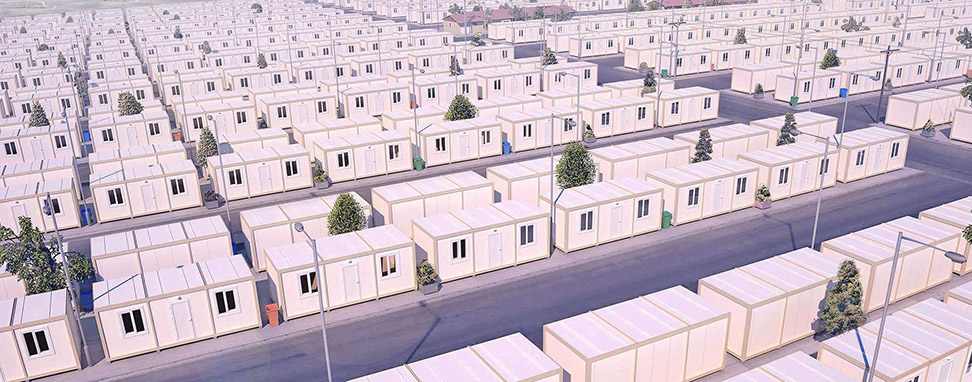Building a metal container house requires various materials to ensure structural integrity, insulation, weatherproofing, and interior finishing. Here's a list of materials typically needed for constructing a metal container house:
Metal Shipping Containers:
The primary building blocks of the house, metal shipping containers serve as the structural framework.
Containers come in various sizes, typically 20 or 40 feet in length, and can be stacked or joined to create larger living spaces.
Foundation Materials:
Concrete Footings: Provide a stable base for the containers, usually poured into trenches or holes dug into the ground.
Concrete Blocks or Piers: Used to support the corners or other load-bearing points of the containers.
Structural Reinforcements:
Steel Beams or Columns: Used to reinforce and support the containers, especially for multi-story or larger structures.
Welding Materials: Necessary for welding containers together securely and attaching additional structural components.
Insulation Materials:
Spray Foam Insulation: Applied to the interior walls and ceiling of the containers to provide thermal insulation and seal gaps.
Fiberglass Insulation: Another option for insulating container walls, typically used in conjunction with framing.
Reflective Foil Insulation: Helps to reflect heat away from the interior of the containers, especially in hot climates.

Exterior Finishes:
Cladding Materials: Options include siding, wood panels, metal panels, or cement board to enhance aesthetics and weatherproofing.
Weatherproofing Membranes: Applied to seams and joints to prevent water infiltration and ensure a watertight seal.
Roofing Materials:
Metal Roofing: Durable and weather-resistant, often used for covering container roofs.
Roof Insulation: Insulation material installed above the ceiling to regulate interior temperatures and reduce energy costs.
Doors and Windows:
Steel Doors: Provide security and access points, often fitted with weatherproof seals.
Insulated Windows: Energy-efficient windows installed in cutouts made in the container walls to allow natural light and ventilation.
Interior Finishes:
Drywall or Paneling: Used to cover container walls and create a finished interior surface.
Flooring Materials: Options include hardwood, laminate, tile, or vinyl flooring installed over the container's original flooring.
Trim and Molding: Enhance the appearance of interior spaces and cover gaps between walls and ceilings.
Electrical and Plumbing Materials:
Electrical Wiring: Includes wiring, outlets, switches, and fixtures for lighting and appliances.
Plumbing Pipes and Fixtures: Supply pipes, drainage pipes, faucets, sinks, toilets, and showers for the kitchen and bathroom areas.
Heating and Cooling Systems:
HVAC Systems: Central heating, ventilation, and air conditioning systems to regulate interior temperatures.
Ductwork and Vents: Channels air throughout the house and allows for airflow.
Fixtures and Appliances:
Kitchen Cabinets: Storage solutions for the kitchen area.
Bathroom Fixtures: Includes sinks, toilets, showers, and bathtubs.
Appliances: Refrigerators, stoves, ovens, microwaves, and other essential appliances for daily living.
Sealing and Finishing Materials:
Caulk and Sealants: Used to seal gaps and joints to prevent air and water infiltration.
Paint and Stain: Applied to interior and exterior surfaces for protection and aesthetics.
Tools and Equipment:
Power Tools: Drills, saws, welders, and other power tools for cutting, drilling, welding, and fastening.
Hand Tools: Hammers, screwdrivers, wrenches, and other hand tools for manual tasks.
Building a metal container house requires careful planning, skilled labor, and the use of quality materials to ensure a safe, comfortable, and durable living space.








